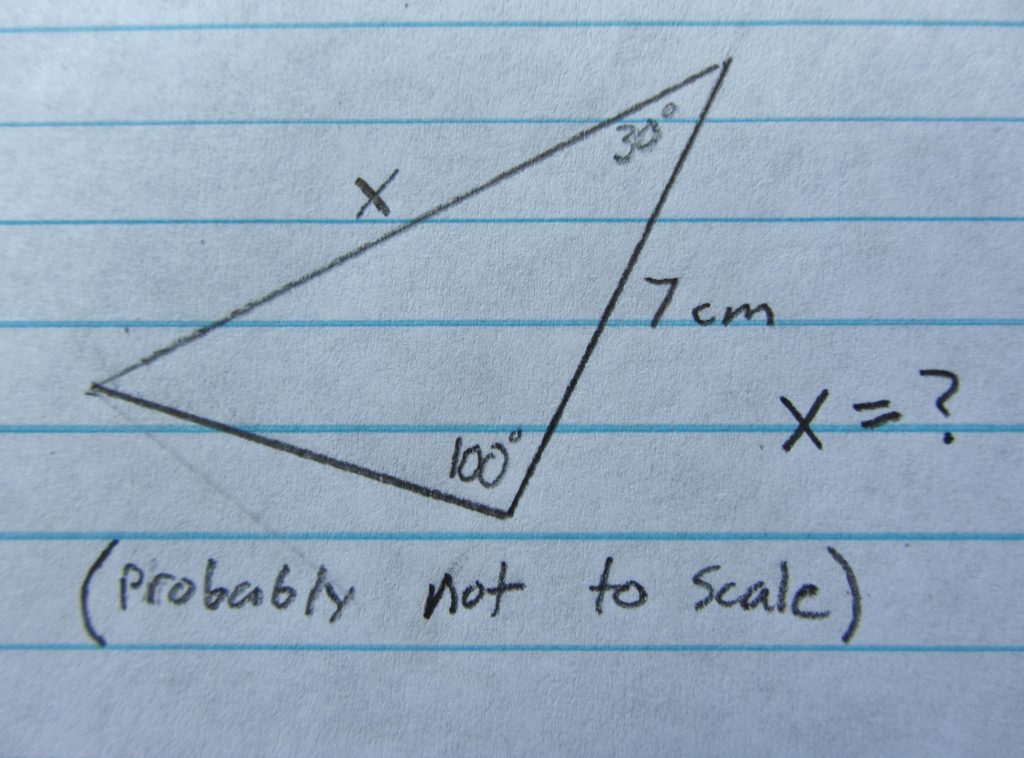In the fascinating world of mathematics, triangles play a crucial role in various fields, from architecture to engineering. Understanding the properties of triangles is essential for anyone delving into geometry, and that's where the triangle solver comes into play. This handy tool allows individuals to compute unknown values of triangles effortlessly, making the study of this geometric shape more accessible and enjoyable.
The triangle solver is not just a tool for students; it can also be a valuable resource for professionals who frequently work with angles and measurements. Whether you are calculating the area, determining the missing side, or finding the angles of a triangle, this solver simplifies the complex calculations that often accompany these tasks. Moreover, with the advent of technology, triangle solvers have become more sophisticated, allowing users to input various parameters and receive instant results.
As we delve deeper into the world of triangles, you will discover the different types of triangles, their properties, and the significance of the triangle solver in solving real-world problems. So, whether you are a student aiming to improve your math skills or a professional seeking an efficient way to tackle geometric problems, understanding how to use a triangle solver can be incredibly beneficial.
What is a Triangle Solver?
A triangle solver is a computational tool designed to assist users in solving various mathematical problems related to triangles. It can determine unknown sides, angles, and even the area of a triangle when given certain known values. Triangle solvers come in various forms, including online calculators, software applications, and even physical tools like protractors and rulers.
How Does a Triangle Solver Work?
Triangle solvers operate based on the principles of geometry and trigonometry. When you input known values such as side lengths or angles, the solver uses mathematical formulas and theorems—like the Pythagorean theorem and the sine, cosine, and tangent laws—to calculate the unknowns. This process typically involves the following steps:
- Input known values (sides or angles).
- Select the type of triangle (e.g., right, acute, obtuse).
- Click on the calculate button.
- Receive results for unknown sides, angles, or area.
What Types of Triangles Can Be Solved?
Triangle solvers can handle various types of triangles, including:
- Right Triangles: Triangles with one 90-degree angle.
- Acute Triangles: All angles are less than 90 degrees.
- Obtuse Triangles: One angle is greater than 90 degrees.
- Equilateral Triangles: All sides and angles are equal.
Why is a Triangle Solver Important?
Understanding the significance of a triangle solver is essential for both academic and practical applications. Here are a few reasons why this tool is valuable:
- Efficiency: Saves time by providing quick calculations.
- Accuracy: Reduces the chance of human error in calculations.
- Learning Aid: Helps students understand geometric principles better.
- Versatility: Useful in various fields such as construction, navigation, and physics.
Can Anyone Use a Triangle Solver?
Absolutely! Triangle solvers are designed to be user-friendly, making them accessible to individuals of all ages and skill levels. Whether you are a high school student struggling with geometry, a college student studying engineering, or a professional in a technical field, these tools can help you solve triangle-related problems with ease.
What Are the Limitations of a Triangle Solver?
While triangle solvers are incredibly useful, they do have limitations. Some of these include:
- They require accurate input; incorrect values can lead to erroneous results.
- Not all solvers can handle complex triangle types or irregular shapes.
- Dependence on technology; issues with software or internet connectivity can hinder usage.
How to Choose the Right Triangle Solver?
Selecting the appropriate triangle solver depends on your needs. Here are some factors to consider:
- User Interface: Look for a solver that is intuitive and easy to navigate.
- Features: Ensure it offers the calculations you need (sides, angles, area).
- Accessibility: Choose a tool that can be accessed on various devices.
- Reviews: Check user feedback to gauge the reliability of the solver.
Where Can You Find a Triangle Solver?
Triangle solvers are widely available online, with numerous websites offering free calculators. You can also find mobile apps dedicated to solving triangle problems, making it convenient to use on-the-go. Additionally, many educational platforms provide triangle solvers as part of their math resources.
What Are the Best Practices for Using a Triangle Solver?
To maximize the effectiveness of a triangle solver, consider the following best practices:
- Double-check your inputs before calculating.
- Familiarize yourself with the type of triangle you are dealing with.
- Review the results and understand the calculations behind them.
- Use the solver as a learning tool to strengthen your geometry skills.
Conclusion: Embrace the Power of the Triangle Solver
The triangle solver is an essential tool for anyone looking to enhance their understanding of geometry. With its ability to simplify complex calculations and provide quick answers, this solver proves to be a valuable resource for students and professionals alike. By utilizing a triangle solver effectively, you can unlock the secrets of triangles and apply this knowledge to various real-world situations.
You Might Also Like
Understanding The Verizon Class Action Lawsuit: What You Need To KnowUnveiling The Mystique Of The Banshee Moon
Against All Odds: The Remarkable Stories Of The 1972 Andes Plane Crash Survivors
Exploring The Depths Of "All Yourn" Lyrics
Unveiling The Charisma Of Kirah Ominique: A Rising Star
Article Recommendations
- Daniel Ezra Wife
- Kody Brown New Wife Amber Smith
- Mushmouth
- Salt Trick For Men
- Paul Walker Died
- Abbagailpeaches
- Life Below Zero Thorne Bay
- Mandy Rhea Age
- Valkyrae Naked
- Masa 49 Com


